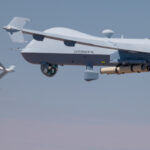
Raytheon Technologies [RTX] on Tuesday posted higher sales and earnings in its second quarter driven by the ongoing recovery in commercial air travel, but the company’s defense businesses were largely down in the period. The company’s defense business continues to be beset by supply chain challenges and labor availability, and was also impacted by delays in some contract awards, Greg Hayes, chairman and CEO of Raytheon Technologies, said on a call with analysts. For most of its commercial businesses, Raytheon…

 By
By 











